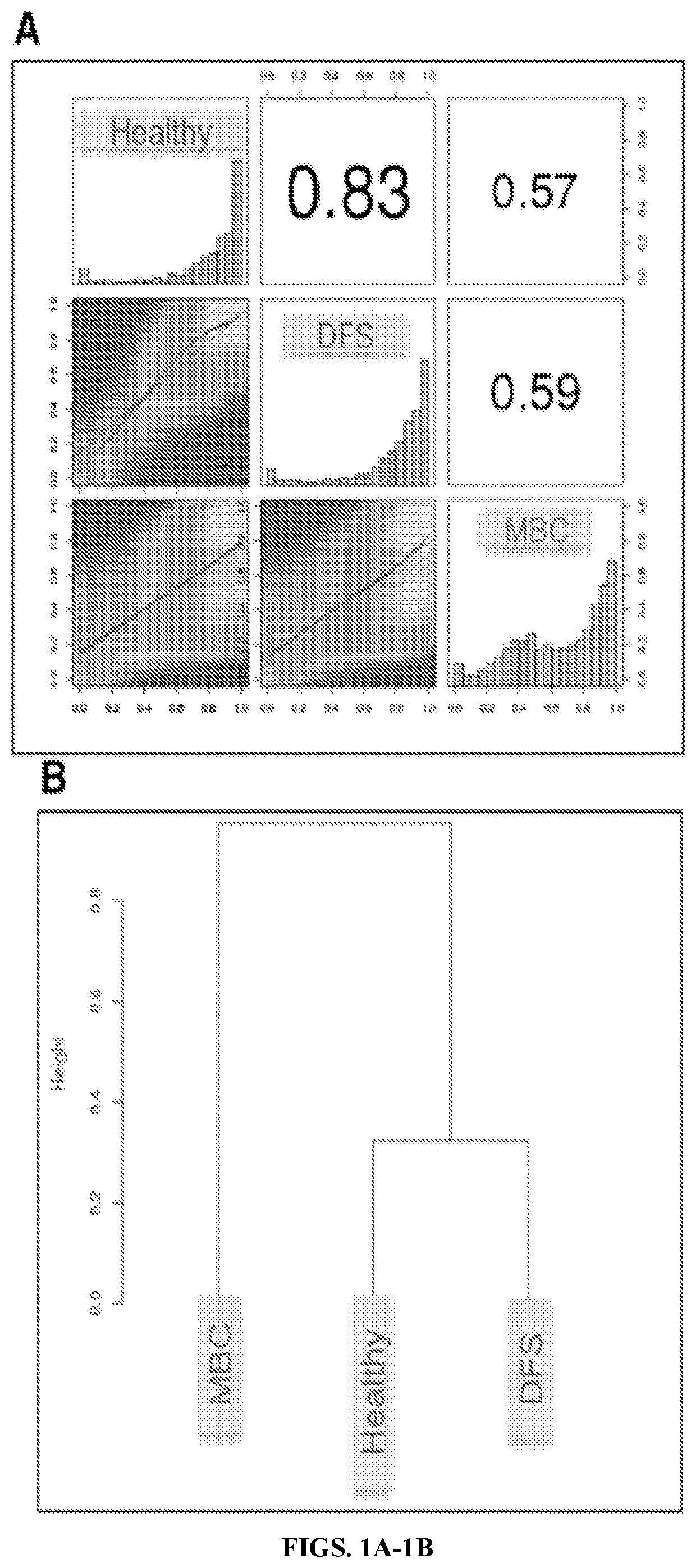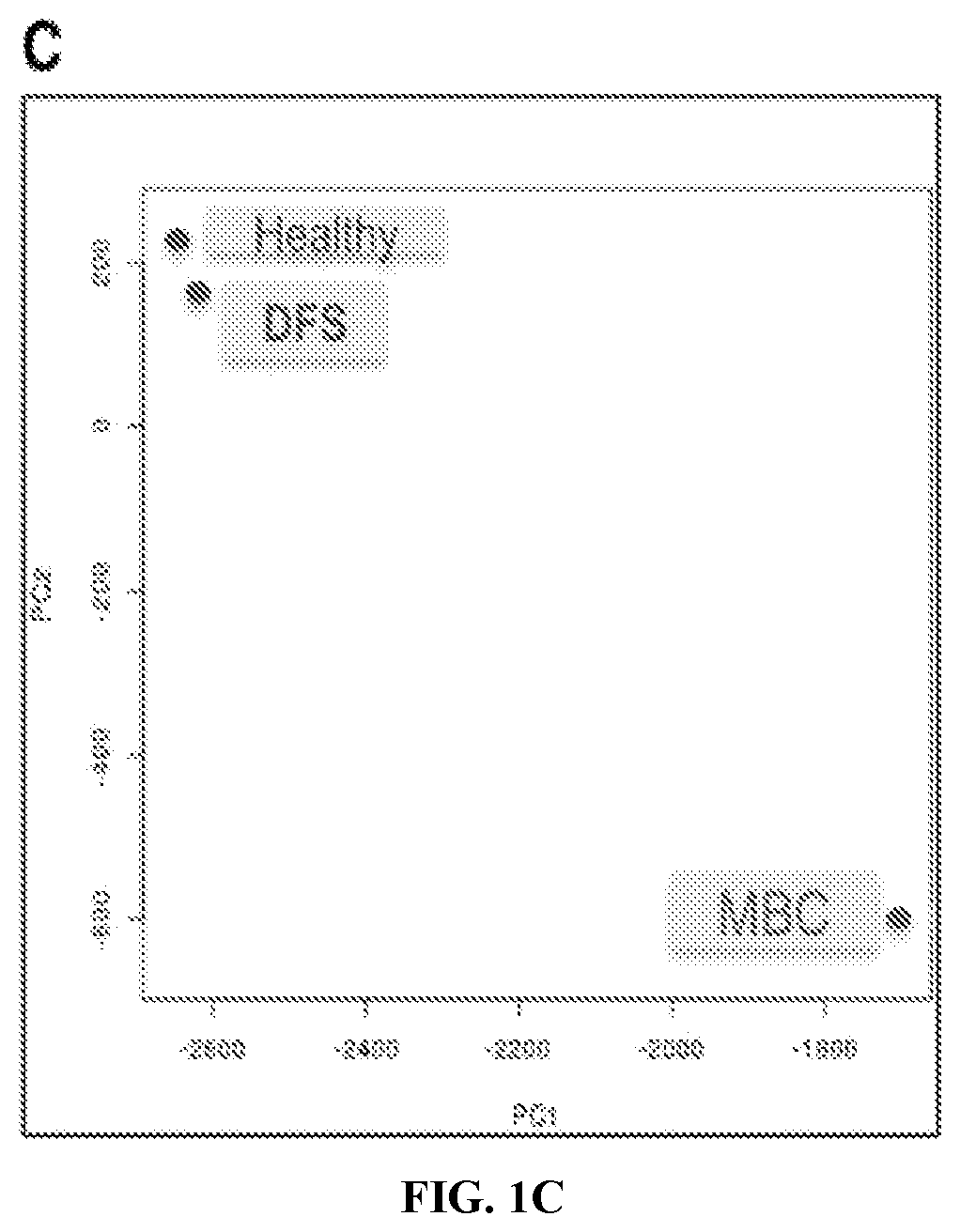Prognostic markers for cancer recurrence
a cancer recurrence and prognostic marker technology, applied in the direction of microbiological testing/measurement, biochemistry apparatus and processes, etc., can solve the problems of not being able to define concretely which patients will be cured or develop mbc, the 5-year survival rate of patients with mbc remains below 25%, and the clinical diagnosis is not clear. achieve the effect of high signal to noise and sensitivity of the tes
- Summary
- Abstract
- Description
- Claims
- Application Information
AI Technical Summary
Benefits of technology
Problems solved by technology
Method used
Image
Examples
example 1
[0124]This example relates to identification of a methylation panel by whole genome bisulfate sequencing as described in Legendre et al. Clinical Epigenetics (2015) 7:100, incorporated herein by reference.
Clinical Characteristics of Samples
[0125]The plasma methylome of MBC was characterized by paired-end whole-genome bisulfite sequencing (WGBS) to identify differentially methylated regions that were uniquely found in circulating cfDNA of a pool of 40 MBC when compared with a pool of 40 H and a pool of 40 DFS. MBC samples represented metastasis to usual sites including bone (n=23), liver (n=12), brain (n=3), lung (n=17), and soft tissue (n=6). All but five samples had involvement of more than one site. For the DFS cohort, the average years disease-free equals 9, with a range of 3-27 years. The groups were relatively matched for age at diagnosis and race. The median age for H, DFS, and MBC was 48, 42, and 42, respectively. Furthermore, the DFS and MBC groups showed comparable hormone-...
example 2
[0143]This example describes additional analysis of the experiments in Example 1 and other approaches to identification of molecular profiles.
[0144]Molecular profiles have improved clinicians' ability to determine the need of chemotherapy for those individuals who are at high-risk for recurrence. The most widely used multigene predictive classifiers include the 21-gene Oncotype Dx signature (Genomic Health, USA), the 70-gene MammaPrint signature (Agendia, Netherlands), the 76-gene Rotterdam signature and the PAM50 intrinsic classifier (NanoString, USA). Despite the huge quantity of information gleaned from these gene signatures, none can precisely predict the clinical course of an individual and rely on the presence of tissue at a single time point. What all these tests have in common is they estimate the risk of harboring micrometastatic disease at the time of diagnosis which is based on the patient's tumor biology, and therefore who will benefit from systemic chemotherapy. All of ...
PUM
| Property | Measurement | Unit |
|---|---|---|
| volumes | aaaaa | aaaaa |
| volumes | aaaaa | aaaaa |
| volumes | aaaaa | aaaaa |
Abstract
Description
Claims
Application Information
 Login to view more
Login to view more - R&D Engineer
- R&D Manager
- IP Professional
- Industry Leading Data Capabilities
- Powerful AI technology
- Patent DNA Extraction
Browse by: Latest US Patents, China's latest patents, Technical Efficacy Thesaurus, Application Domain, Technology Topic.
© 2024 PatSnap. All rights reserved.Legal|Privacy policy|Modern Slavery Act Transparency Statement|Sitemap



